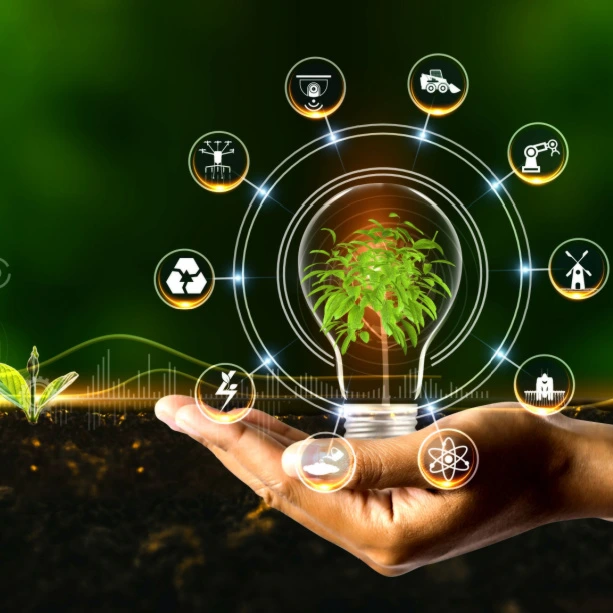Energy harvesting is a process that Internet of Things (IoT) innovators are implementing in technology solutions. Energy harvesting supplies power to batteries; in other words, imagine not needing to replace batteries on any of your IoT sensors. This new advancement is crucial for sustainability and reliability.
.webp?width=1000&name=unnamed%20(7).webp)
How is Energy Received?
Asset tracking is a great example of IoT sensors that work best and reduce costs by having a long life. While traditional batteries can offer long life to IoT sensors, an alternative is to use energy-harvesting tags. There is energy in the environment all around us. These tags or sensors receive or “harvest” energy from surrounding energy leaks. Different receptors, such as antennas or circuits, capture the leaked energy to charge the tag. These energy leaks come from heat waves, solar radiation, vibrations, and Radio Frequency waves, such as Bluetooth, WiFi, and other connectivity devices. The tag collects and processes this captured energy so that the sensor can transmit its data.
How Does Energy Harvesting Work?
Energy harvesting would never be enough for something like a laptop or iPhone because the consumption rate is too high on these devices. But for small IoT tags that have a small amount of data to transmit, energy harvesting is an excellent way to have a less-expensive tag that lasts a long time. It usually takes several minutes for the tag to harvest enough energy to complete an action. Most IoT sensors need a minimum update rate of one to four minutes. These battery-less tags have a harvesting and transmitting antenna that stores just the energy needed to make a transmission.
Increase Your ROI by Investing in AirFinder Everywhere
- Loss Prevention. Reduce the amount of loss that occurs during the supply chain process
- Location Coverage. AirFinder Everywhere uses a combination of GPS, Cellular, and WiFi to determine location everywhere
- Security Alerts. Know when a delay in shipment has occurred so the problem can be addressed immediately.
Why is Energy Harvesting Important?
The concept of a constantly-powered Bluetooth Low Energy tag is ground-breaking. Instead of having to replace batteries, companies can use an energy-harvesting BLE tag. While there are some advantages to batteries, battery replacement becomes costly for companies and pollutes the environment. Energy-harvesting tags extend battery life and reduce waste.
.webp?width=1000&name=Sustainability_banner%20(1).webp)
How Does Energy Harvesting Affect You?
Energy harvesting paves the way for sustainability in technology. Asset tracking solutions are more sustainable thanks to BLE tags with the capability to harvest energy from the surrounding environment. If you would like to learn more about asset tracking and how it promotes sustainability, book a demo with us!




